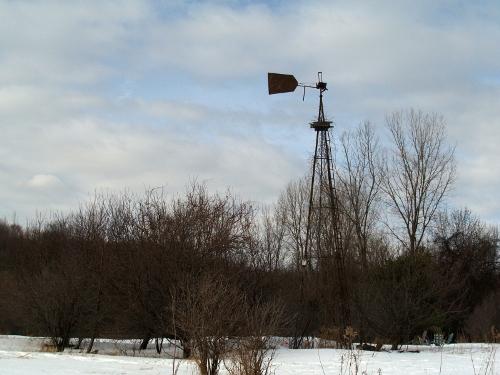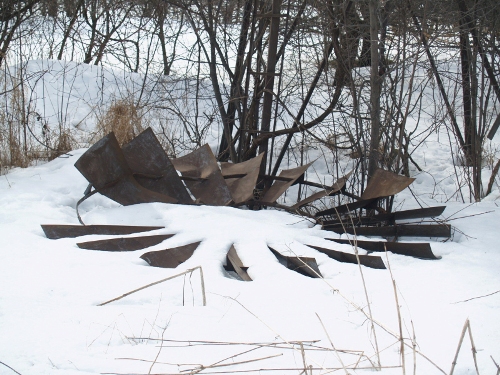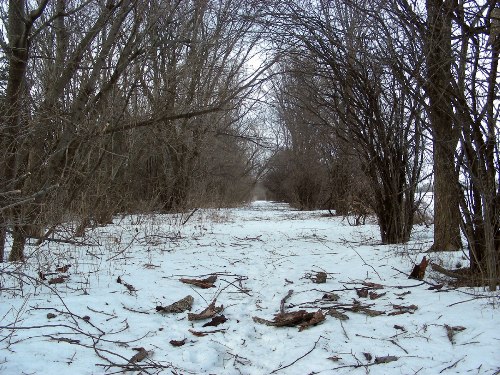Welcome
to the McGill Bird Observatory weekly report.
Click here for a complete listing of our archives.
Comments or
questions are welcome at "mbo AT migrationresearch.org".
|
PICTURE
OF THE WEEK: |
|
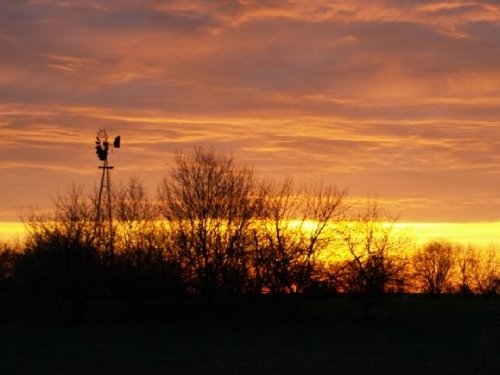
A last view of the venerable windmill at MBO, which lost its blades this month.
(Photo by André Pelletier)
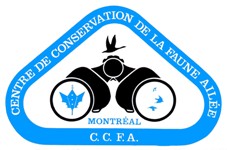
|
MBO
gratefully acknowledges the in-kind support provided for winter 2009-2010 by CCFA (Centre de Conservation de la Faune Ailée) in Montreal, in the form of bird seed to keep the MBO feeders stocked throughout the season.
|
|
|
|
THIS PERIOD |
THIS WINTER |
2010 TOTAL |
SITE TOTAL |
|
# birds (and species) banded |
21 (4) |
232 (15) |
38 (6) |
23547 (105) |
|
# birds (and species) repeat |
12 (2) |
128 (11) |
19 (2) |
4360 (66) |
|
# birds (and species) return |
0 (0) |
7 (4) |
1 (1) |
621 (37) |
|
# species observed |
23 |
52 |
25 |
199 |
|
# net hours |
20 |
274 |
28 |
39935.2 |
|
# birds banded / 100 net hours |
95.2 |
84.7 |
135.7 |
59.0 |
|
|
Note: table does not include nocturnal banding (owls) |
|
Banders-in-charge: Simon Duval, Gay Gruner
Assistants: Mike Beaupré, Chris Cloutier, Jean Demers, Malcolm Johnson, Barbara MacDuff, Donald MacDuff, Chris Murphy, Mariner Palmer, Greg Rand, Clémence Soulard.
Notes: Overall, February temperatures were mild, despite an initial cold spell and, at the end of the month, ferocious winds. We observed 23 species over 12 observation periods. A flock of Snow Buntings flew over MBO, increasing our winter species list to 52; we also added four new species for 2010: Great Black-backed Gull, Brown Creeper, Bohemian Waxwing and, of course, Snow Bunting. House Finch remained fickle to the MBO feeders for all but the last two days of the month, when they mysteriously appeared in good numbers. A big thank you to the dedicated censusers who regularly make the MBO trek and spot the birds. Observations are a vital component of the MBO data.
We managed two banding days and were astounded to band another 10 Black-capped Chickadees for the season. Several unbanded chickadees, such as the one pictured below, continue to frequent the feeders! More study of the movement patterns of winter finches and chickadees is definitely needed.
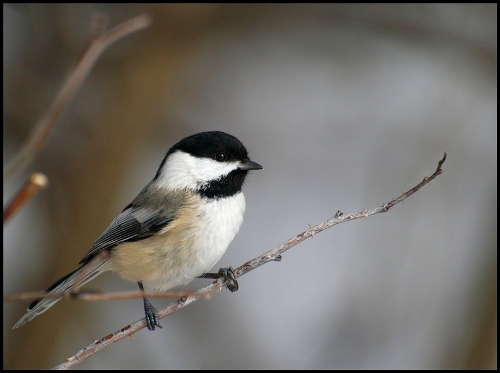
Black-capped Chickadee near the MBO feeders.
(Photo by Simon Duval)
|
Anyone who has ever been to the MBO is familiar with our windmill. Its tall structure, silhouetted against the morning sun, has been captured in countless photographs. Unfortunately, the blades of the windmill dropped off on February 21, leaving us (and several Tree Swallows and Brown-headed Cowbirds) to pine for the squeaky, screechy landmark and favourite perch. Oddly enough the blades dropped off five days prior to the extreme gusts which occurred on February 26 and left the MBO site strewn with branches and bark from wind-whipped trees.
This week’s top 5 [last month's rank in brackets]
# individuals banded |
mean # individuals observed daily |
1. Black-capped Chickadee (10) [1] |
1. Black-capped Chickadee (12) [2] |
2. Mourning Dove (6) [-] |
2. Mourning Dove (11) [4] |
3. American Goldfinch (3) [5] |
3. Slate-coloured Junco (8) [3] |
4. American Tree Sparrow (2) [2] |
4. American Crow (7) [-] |
|
5. Blue Jay (5) [-] |
|




